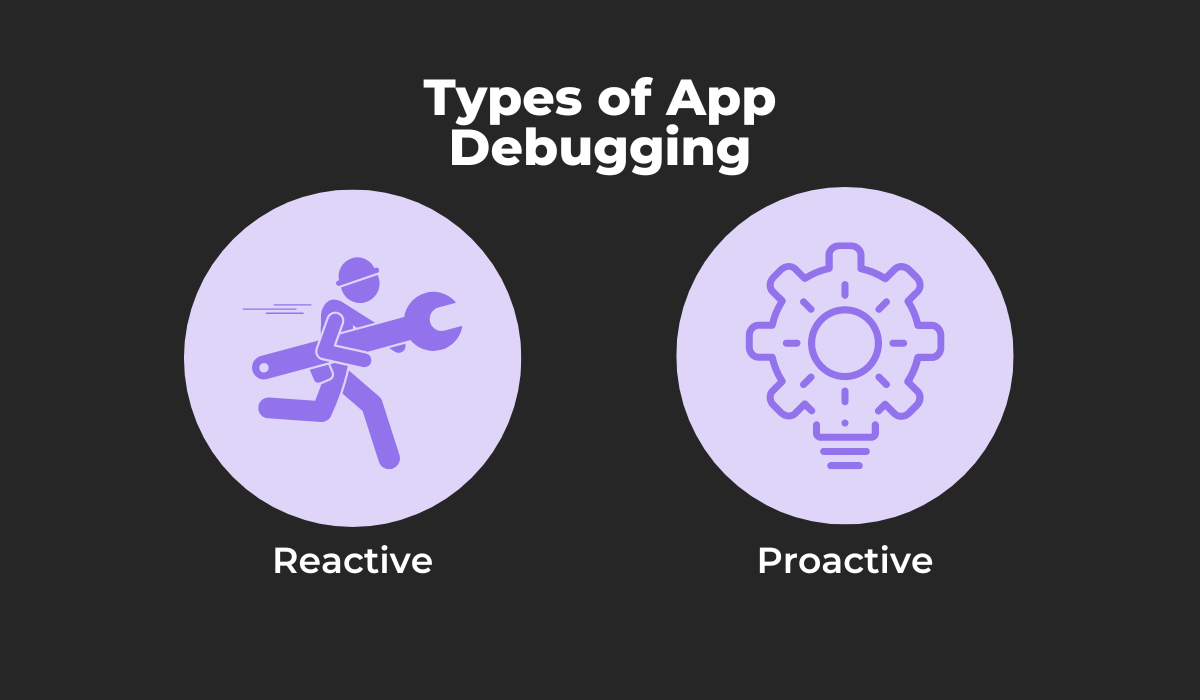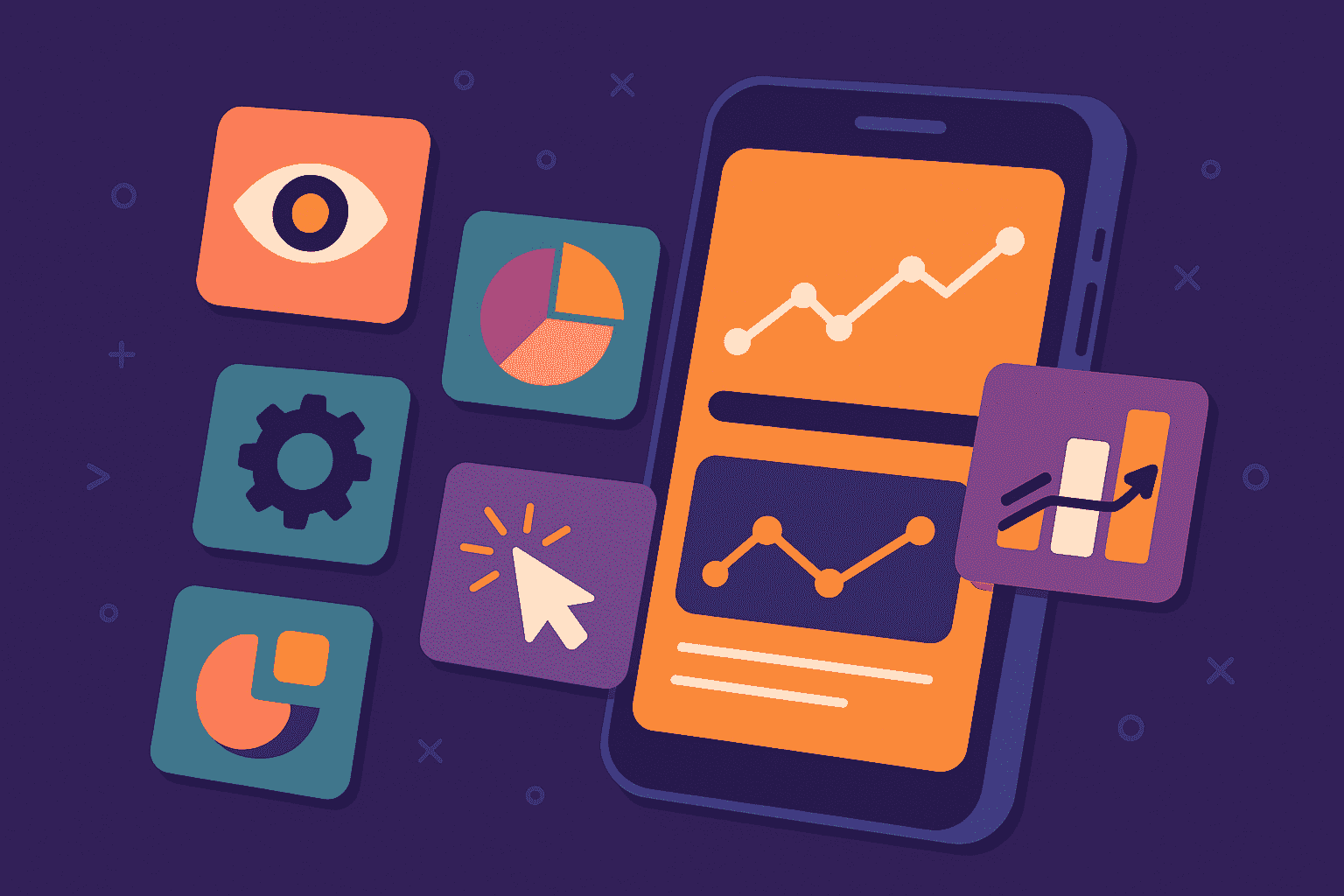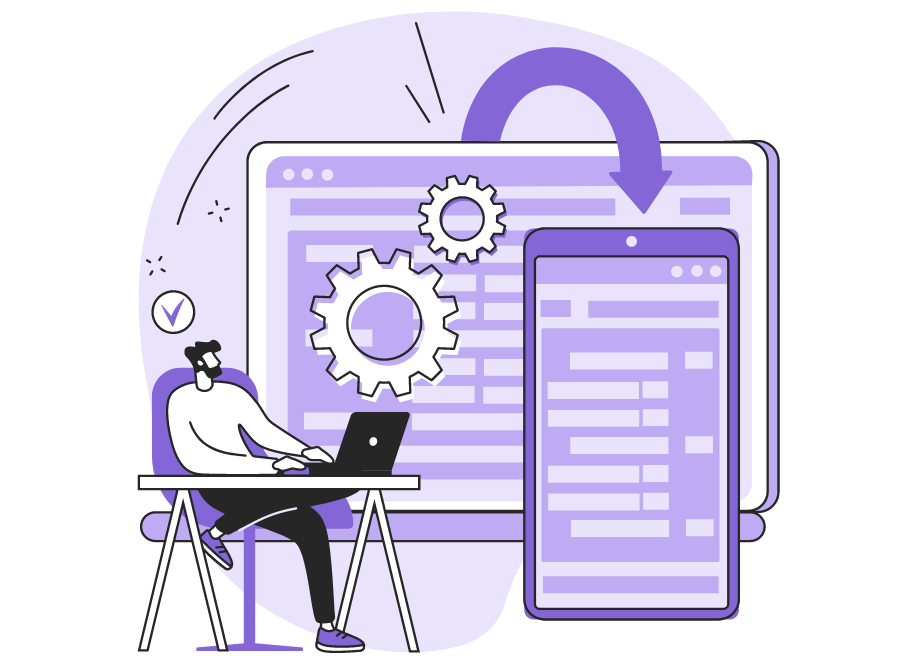
App testing and app debugging are two crucial concepts in the realm of software development that often get confused and used interchangeably.
Despite being closely related, these two practices are very different from each other.
Misunderstanding them can lead to an inefficient development process, delaying development and potentially impacting an app’s overall quality.
To avoid such pitfalls, it’s essential to gain a clear understanding of them and easily distinguish between the two.
The following sections will aim to give you the necessary information to have a solid grasp of app testing and debugging and describe their key differences.
To start off, we will begin by thoroughly defining the practice of application testing.
Table of Contents
What is app testing
App testing is an essential element of software development that ensures the quality and functionality of an app by thoroughly testing it.
This practice concerns itself with examining a software product to identify any bugs and inconsistencies and uncovers potential areas for improvement before an app reaches the hands of end users.
It’s a critical development phase that ensures the production of less buggy and higher-quality software.
To help you understand this process better, consider the following main goals of app testing displayed below.
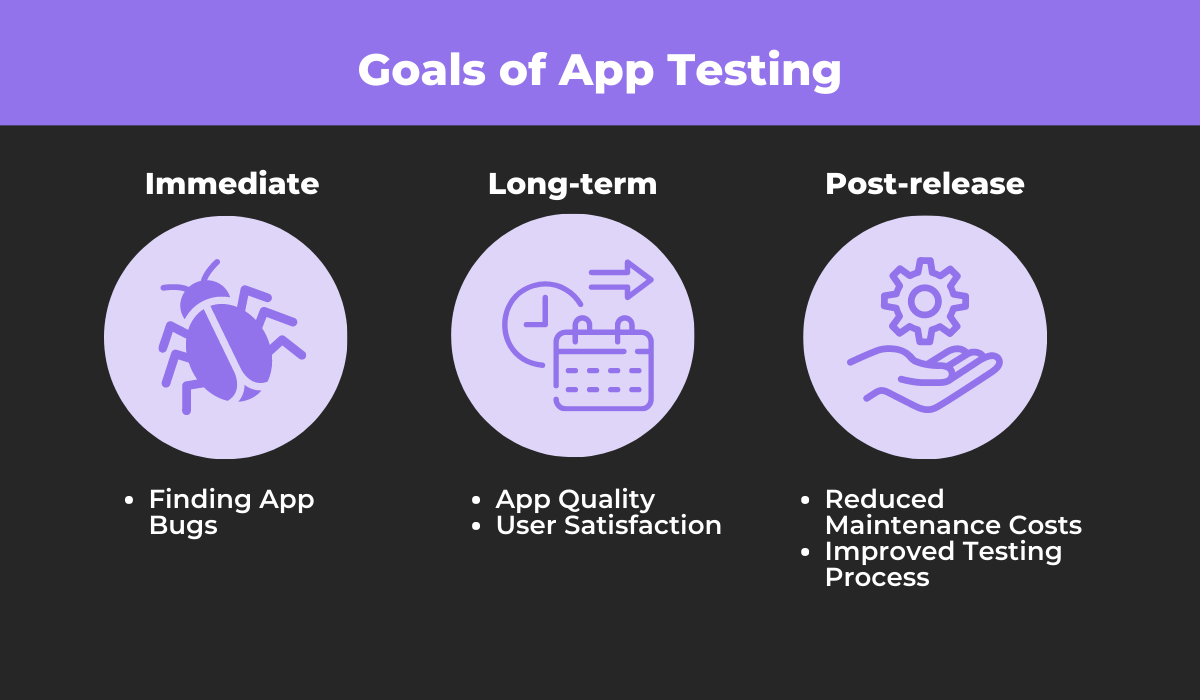
The goals of app testing encompass a wide range of aspects, from immediate concerns like finding and preventing bugs to more long-term objectives like ensuring the app is reliable and that users are satisfied with the product.
Furthermore, even after a release, thorough app testing ensures that an app’s maintenance efforts are reduced and that the overall testing process is kept optimized and effective for future projects.
All of these goals are accomplished through a number of tests, including the ones shown in the next image.
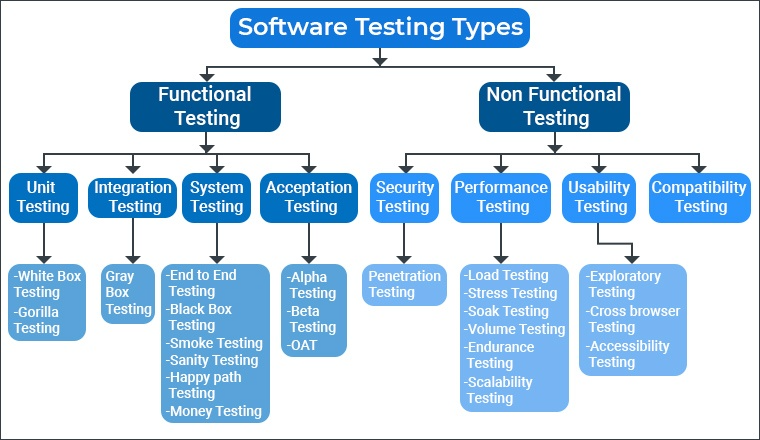
As you can see, the main testing types are functional and non-functional testing.
Functional testing focuses on verifying that a software application’s features and functionalities work well, exploring the app’s individual components and the app as a whole through unit, integration, system, and acceptance testing.

Get unreal data to fix real issues in your app & web.
Beyond functionality, app testing focuses on other non-functional aspects such as performance, app security, user-friendliness, and the product’s compatibility with different devices and configurations.
To run all of these essential tests, app testing utilizes both manual and automated testing techniques, each with its distinct advantages and trade-offs.
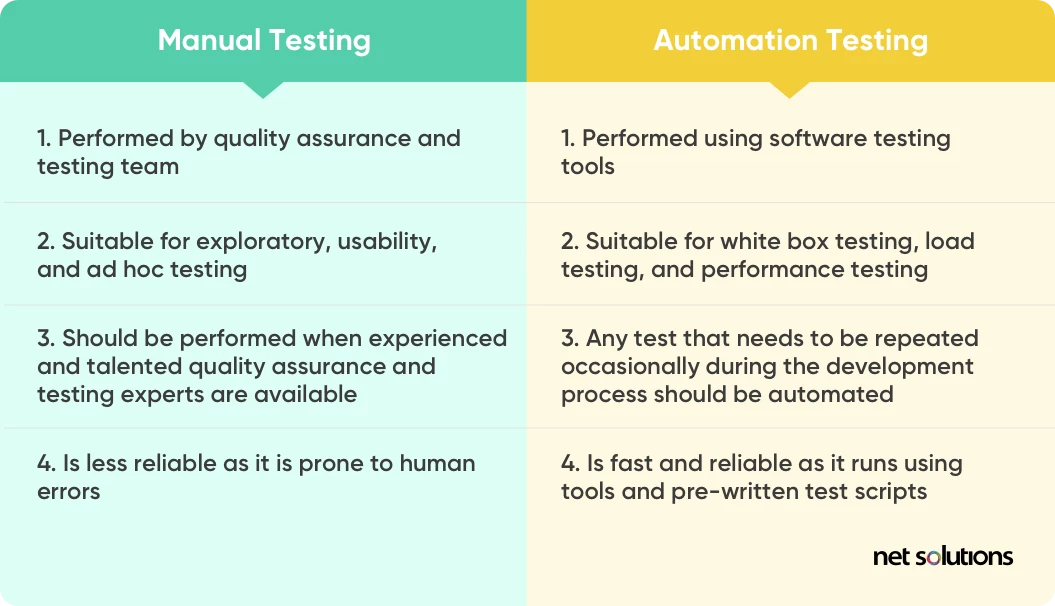
Knowing when to apply manual or automated testing techniques is crucial in optimizing the testing process.
Understanding these techniques and their suitability for different scenarios and testing types helps the ones conducting tests make informed decisions, ultimately improving the app testing outcomes.
If you are interested in reading more about these two testing techniques, you can check out our article on the topic.
As you can see, by leveraging a variety of tests and techniques, app testing works to detect bugs and issues in a software application.
What is app debugging
When the testing process unveils those troublesome bugs and defects, it’s crucial to address and eliminate them efficiently.
This is where app debugging comes in.
As the name suggests, debugging concerns itself with removing bugs from a piece of software.
More specifically, you can think of it as a detective-like approach to trace, diagnose, and resolve issues within the application.
To get a better grasp of debugging, let’s take a look at a concise explanation provided by a Quora user in the following image:

As you can see, while testing serves to find issues, debugging delves deeper.
In addition to seeking to understand why a problem occurred by working backward from the defect towards the source of the issue, after the origin of the defect is found, debugging aims to resolve the matter quickly and effectively.
This goal is reached through the several stages of the app debugging process, outlined next.
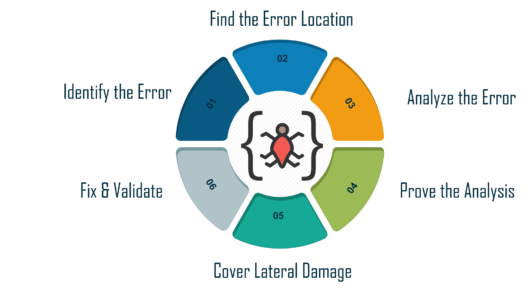
These stages are interconnected and consist of identifying the issue and finding its root cause.
Then, the code is carefully modified by developers without causing any lateral damage to other components of an application, and the error is then fixed and validated to ensure it has been completely resolved.
This debugging process is typically conducted after a defect has been found and reported by app testers.
However, this kind of app debugging is just one of two types, as shown below.
Reactive debugging primarily responds to problems and bugs discovered during app testing. A developer will wait for an issue to come up and then follow the debugging stages to fix the issue.
On the other hand, proactive debugging is a preventive approach that aims to minimize issues before they even arise.
It involves identifying potential problem areas in an app and addressing them while the application is being developed through various practices such as code reviews or static code analysis.
So, debugging is not a development stage following app testing but can be done throughout development.
In conclusion, app debugging is a critical process where developers follow a number of steps with the goal of uncovering the causes of issues and fixing them.

App testing vs. app debugging: key differences
Now that we’ve established a foundation for understanding both app testing and debugging, it’s time to examine their key differences and how they complement each other.
Although these two concepts are closely related in the software development process, they are distinct in many ways. Namely, they differ in terms of the following aspects:
- Approach
- Techniques
- Timing
To better understand these distinctions, you can take a look at the following table, comparing app testing and app debugging.
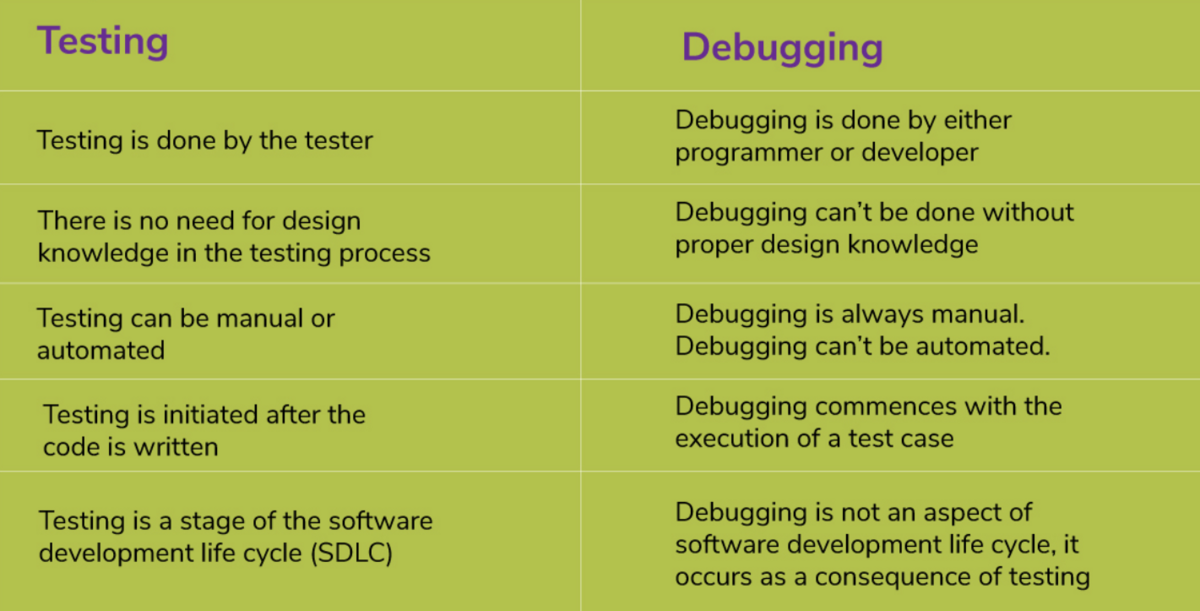
Primarily, app testing is carried out by testers who don’t necessarily need app design knowledge, whereas debugging is done by the development team who need to possess coding expertise.
Another distinction is that testing can be performed manually or using automation tools, while debugging is always manual.
Finally, the timing of these approaches is different. App testing is a distinct development stage that usually comes after an app is developed, while app debugging can occur at any time as a result of executed tests.
As you may have noticed, these two concepts are complementary, and their relationship is displayed in the following graph.
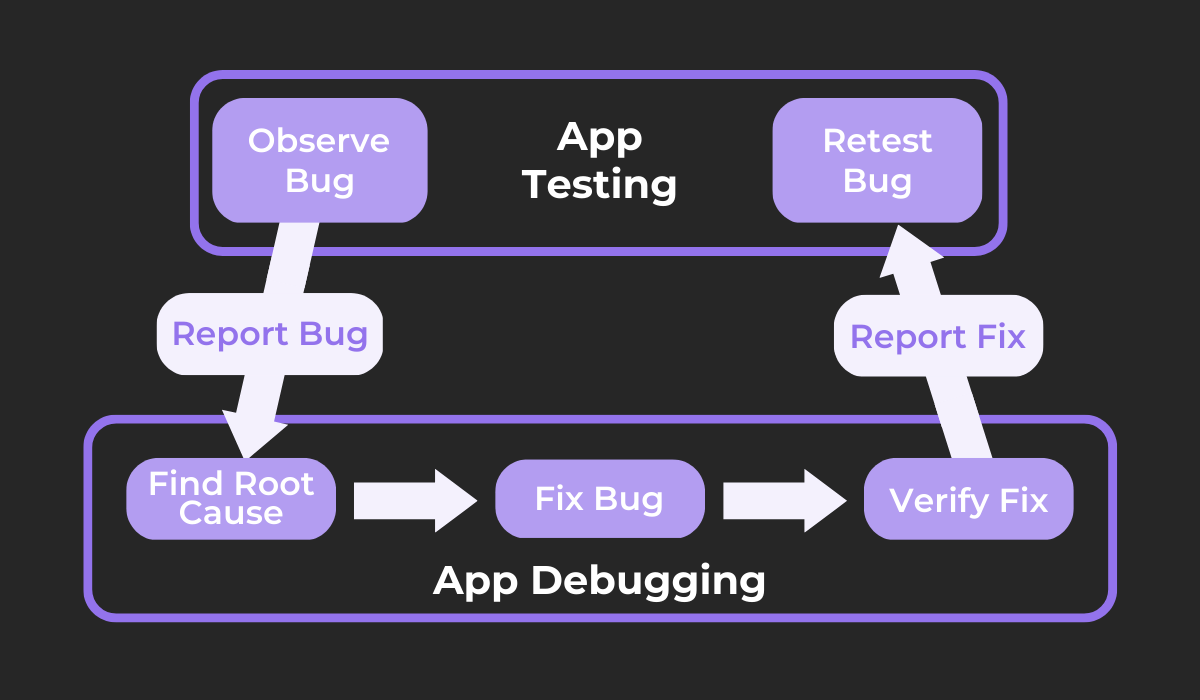
Testers find bugs and send detailed bug reports to developers, who identify the cause of the issue, fix it, and verify the fix.
The solution is then reported back to testers, who retest the bug to ensure everything is in order.
During the investigation of the root causes, developers need a lot of data surrounding a defect to resolve an issue effectively.

Capture, Annotate & Share in Seconds with our Free Chrome Extension!
While testers can manually enter this data in bug reports, there is a helpful tool that can facilitate this process—Shake.
Shake is a bug reporting tool that automatically attaches valuable data to reports, ensuring that the developers receive all the information they need, and streamlining both app testing and app debugging.
Take a look at the data that Shake automatically attaches to bug reports in the next screenshot.
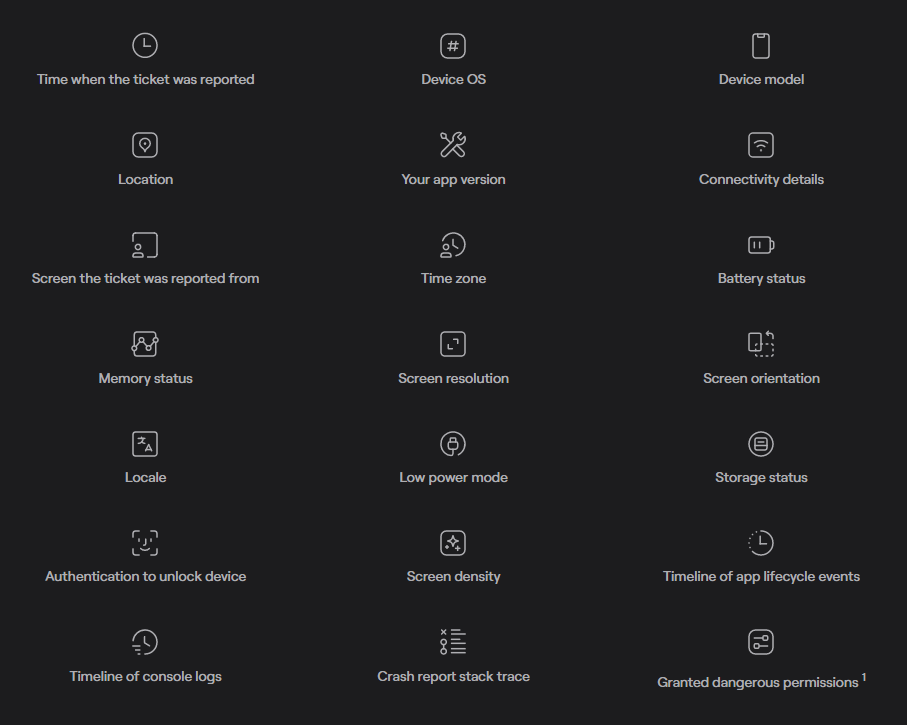
Imagine a scenario where a severe bug occurs on a specific device.
A tester can quickly report the crash with Shake from its intuitive in-app ticket screen, and essential information such as the device model, OS version, memory status, and other pertinent details will immediately be attached to the report.
This data will then enable the developer to fully understand and recreate the issue, identify the root cause, and resolve the problem more efficiently.
To summarize, app testing and debugging are separate but intertwined processes, each playing a crucial role in delivering a high-quality software product and understanding their differences and how they complement each other is key.
Conclusion
At this point, you should have grasped the notion that app testing and debugging, while distinct, are both essential components in the realm of app development and the software testing process.
By now, you should have a better understanding of the primary distinctions between these two concepts, their types, and their unique purposes during development.
Hopefully, this knowledge will enable you to effectively apply these practices in your app development projects.
You’re now well on your way to using these practices optimally and leveraging their complementary nature to create robust, high-quality applications that meet the needs of your users and exceed their expectations.

